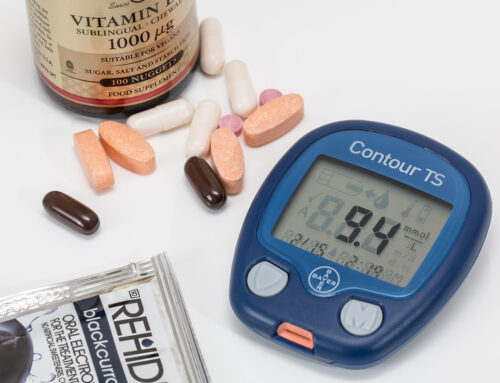It’s fascinating to watch the discussion about Covid-19 inevitably end with the promise of a vaccine to save us from the shelter-in-place mandates and to swing the economy back into full tilt.
The push to re-open states and get back to a life that resembles what was “normal” way back in February hinges on whether or not we will have a vaccine soon. Currently, there are dozens of vaccines that are starting clinical trials, and it is a competitive space among manufacturers. Many have borrowed findings from past SARS and MERS vaccine research, since there is such great resemblance among these viruses and SARS-Covid-2. Many vaccines under investigation use experimental RNA and DNA technology, which provides the body with instructions to produce its own antibodies against the virus.
Sounds great, so what’s the hold up?
Vaccine Development
Using the typical timeline for any vaccine development you can see how unlikely the push for a SARS-Covid-2 vaccine in 18 months will be.
Covid Vaccine development under normal circumstances:
- Academic research would be completed by 2022
- Preclinical trials completed by 2024
- Phase I trials where a few dozen patients would try the vaccine finish by 2026
- Phase II trials where a few hundred patients would try the vaccine finish by 2026
- Phase III trial were thousands of patients would be vaccinated finished by 2028
- Factories to be built for manufacturing: 2028-2032
- Manufacturing by 2034
- Approval by 2036
- Distribution of vaccines by 2036.
That is 16 years from now….just in case the math escaped you because your at-home learning environment is lacking in math emphasis.
The Reality of a SARS-Covid-2 Vaccine
But even at the current pandemic-speed time line of vaccine production, which incorporates large scale testing sooner, emergency provisions moves the projected date of completion from Jan 2036 to November 2029 (I’ll be in forced retirement by then). And that is IF the vaccine works, and if it doesn’t cause too many side effects.
Despite the unprecedented push for a vaccine, researchers caution that less than 10 percent of drugs that enter clinical trials are ever approved by the Food and Drug Administration. (Mcnamee, Laura M., et al. Timelines of Translational Science: From Technology Initiation to FDA Approval. Plos One, vol. 12, no. 5, 2017, doi:10.1371/journal.pone.0177371.)
The Chicken pox vaccine took 28 years from its inception to being widely available. FluMist vaccine was 28 years in the making. Human Papilloma Virus or Gardisil was available after 15 years from beginning to end, and rotavirus was 15 years to completion. Rotavirus and HPV vaccines include time from filing of the first investigational new drug to approval. (Plotkin, Stanley A., et al. Plotkin’s Vaccines. Elsevier, 2018).
The current push is to get a Covid-19 vaccine is roughly 18 months!
If we were to move at “pandemic speed” through trials, it might bump up the completion date, but will there be holes in our confidence with respect to safety as well as efficacy of the vaccine? There is a potential risk of something called “vaccine-induced enhancement” seen in a few drugs for HIV and dengue fever where the vaccine actually made the disease worse after someone becomes infected.
There will need to be many manufacturing facilities built that do not currently exist to handle production of a SARS-Covid-2 vaccine. Typically, these factories are built over 5 years due to the requirements needed to follow strict guidelines to handle biological material and production.
Once we have an effective vaccine, companies will need to start producing possibly billions of doses. It’s a mind boggling amount of logistics, space, financial support, and then plans for distribution.
Speeding up regulatory approvals doesn’t quite help get us to the finish line that much faster. Approvals typically take a full year, during which time scientists and advisory committees review the studies to make sure that the vaccine is as safe and effective as drug makers say it is. After nearly 40 years of work on the vaccine for HIV we have: a few Phase 3 clinical trials, one of which actually made the disease worse, and another with a success rate of just 30 percent. Currently, we have a 2030 estimated timeline for the completion of an HIV vaccine, which means it has been in the works for over 50 years.
What do we do in the meantime?
So, let’s say that each phase is fast-tracked, the finished vaccine is considered safe and the manufacturing goes smoothly – no glitches. It will be many, many years at best before a vaccine gets us out of the house. Can we wait that long? (My hair is going to be very interesting by then). We are going to have to open our society sooner than that. How do we protect our loved ones and our health care workers but move forward with caution and care and move beyond our own backyards and bedrooms?
My guess is our own biology is smarter than scientists might be in this particular subject. We might build immunity on our own by being around symptomatic individuals. We might have had the illness in December or February and didn’t know it. I think the more promising thing to do is to optimize our testing strategies and increase their sensitivity so that we know our status with regards to Covid and can count on our body to protect us from a future exposure.
Usually my blogs offer suggestions about what to do regarding the problem addressed in the blog. For this blog, I honestly don’t have any suggestions other than to stay safe, stay healthy, and keep it steady. Continue all my recommendations mentioned in previous blogs and on our Covid Info Page. This is going to be temporary and the definition of temporary is changing, a lot. Rest assured there is always a way forward.



